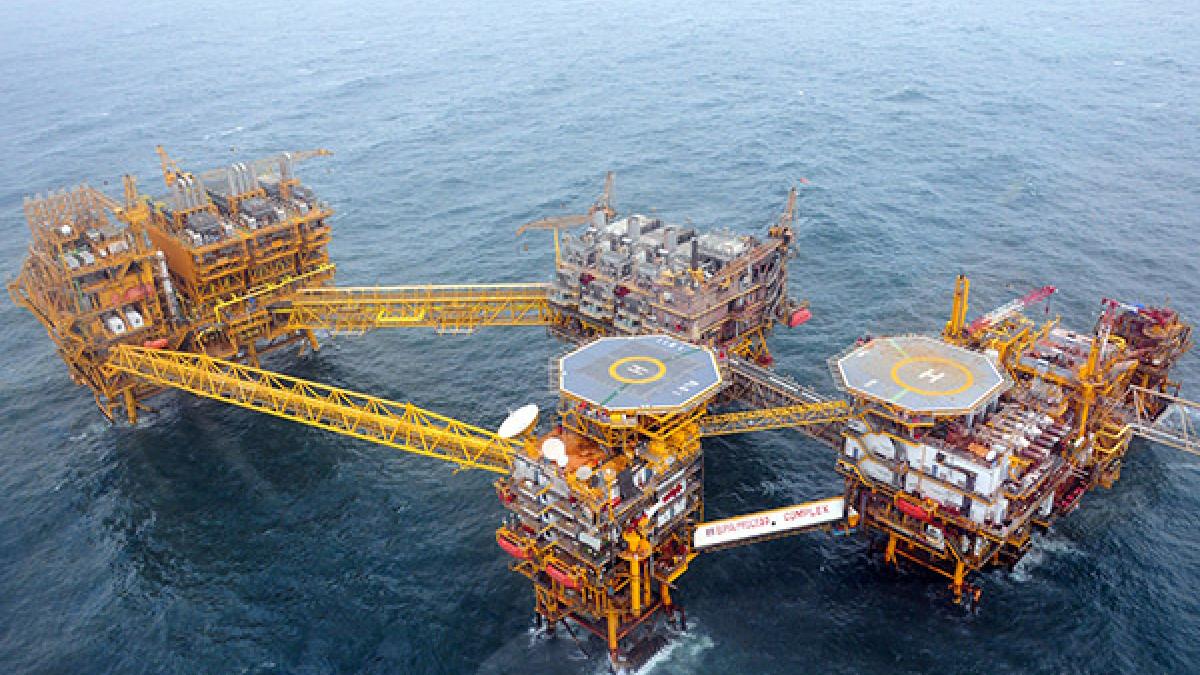India’s oil production is expected to boom in the near term, in a bid to reduce the country’s dependence on imports from other countries.
In this context, the Indian Oil and Natural Gas Corporation (ONGC) is preparing to bet billions of dollars on deep-water and ultra-deepwater exploration.
This comes at a time when New Delhi encourages companies such as state-controlled ONGC to do more to benefit from local oil and gas reserves, according to information monitored by the specialized energy platform, quoting Bloomberg.
“On land, we have drilling, appraisal or aggregated data in one form or another for most of the basins,” said Sushma Rawat, director of exploration at the state-owned giant.
“But there are still large offshore areas for which we have very little data, as almost no wells have been drilled,” he added.
Declining oil production in India
Rawat said that ONGC plans to submit strong bids in upcoming government auctions, to increase the exploration area to 500,000 square kilometers by March 2026, from about 163,000 square kilometers – currently.
Annual spending will rise to 110 billion rupees ($1.3 billion) from 70 billion rupees ($852.3 million) to 80 billion rupees ($974.1 million) annually.
For ONGC, the exploration campaign is also about coping with lower oil production in India, as well as a significant decline in gas production.
During the decade ending at the end of March of last year (2022), oil production decreased by 17.5% to 19.6 million tons (139.16 million barrels), while gas production shrank by just over 10% to 20.9 billion cubic meters, a decrease that made India is subject to high import costs.
ONGC accounts for 66% of India’s oil production, 58% of the country’s gas production, and owns just over half of the country’s exploration leasehold space, making it an attractive partner.
The following graph – prepared by the specialized energy platform – shows the evolution of oil consumption in India from 2019 to 2022:
global investments and pressures
Prime Minister Narendra Modi’s government has set a target of reducing imports by 10% by 2022, and halving them by 2030; But it did not achieve the first objective, with increased reliance on imports instead.
No new targets were announced, but last year (2022) India released nearly a million square kilometers of land that was previously closed to exploration for military, environmental and other reasons.
Rawat and ONGC officials want to take advantage of this opportunity, in an effort to accelerate efforts through a series of partnerships with ExxonMobil, Chevron and Total Energy.
Angus Rodger, director of primary research for Asia Pacific at Wood Mackenzie, said the challenge now facing ONGC was to turn broad agreements into tangible exploration alliances.
“The Indian government wants to see new partnerships emerge between Indian players and the best international scouts,” he continued.
Rawat explained that the international oil companies – which warn of the risks associated with India’s offshore potential – are pressing for better conditions from the Indian government, including the addition of clauses on arbitration, reassurance about the stability of the financial system, and criminal liability, according to statements seen by the energy platform. Niche.
Agreements for oil and gas exploration
In this context, ONGC signed, last August, a major agreement with the US energy company Exxon Mobil, to explore deep waters in the eastern and western coasts of the country.
The easement focuses on the Krishna Godavari and Cauvery basins in the eastern offshore region, and the Kutch Mumbai region in the western offshore region, S&P Global reported.
In September, ONGC signed an agreement with Chevron New Ventures, a subsidiary of Chevron, to assess exploration potential in India.
This comes within the framework of ONGC’s global awareness program, which aims to invite international exploration and production companies to participate in exploration of border areas and geologically difficult sites.
related topics..
Also read..

Leave a Reply